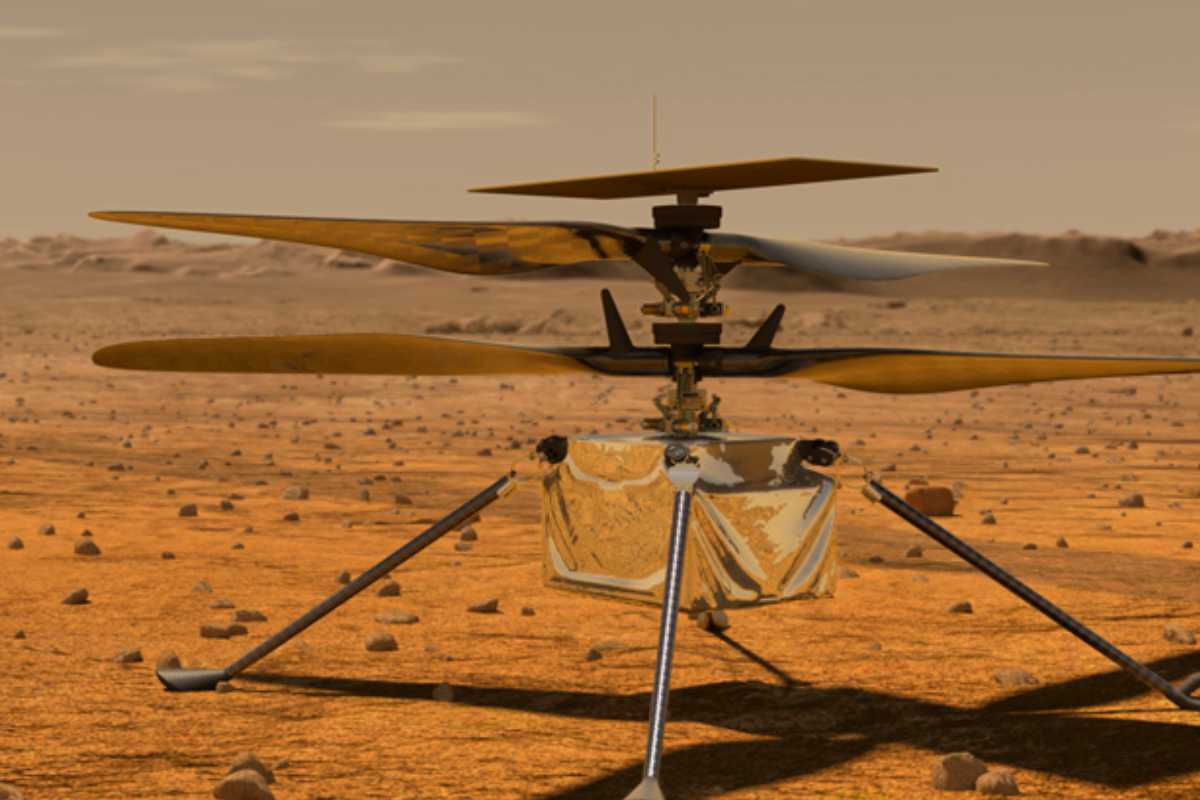
That wouldn’t be very surprising; the helicopter was designed for about five flights, but has already made thirteen!
The fourteenth flight was scheduled for September 18 but never took place, NASA now says. Mars helicopter Ingenuity did not get off the ground. The exact cause of the problems is not yet known.
test
The fourteenth flight followed a few days after Ingenuity – just on the ground – had undergone an extra test. During this test, the rotational speed of the rotors was increased to 2800 revolutions per minute. A necessary adjustment, NASA says. Seasonal changes on Mars reduce the density of the atmosphere and force Ingenuity’s rotors to work harder to keep the helicopter in the air.
Good luck
The test went according to plan; Ingenuity’s motors brought the rotors up to speed, briefly spinning them at 2800 rpm before stopping them again.
After that successful test, NASA wanted to go a step further and make a test flight where the rotors would spin at a speed of 2700 rpm. During this test flight, the helicopter was supposed to rise to a height of five meters and then land again. But that didn’t happen; Ingenuity never got off the ground.
Servo motors
NASA now knows why. Prior to the flight, the helicopter tests all systems. And in doing so, it encountered problems with the servo motors (see box). The helicopter then did what it had to do and canceled the flight.
What is not clear at this point is why the servomotors behaved differently than expected. NASA has repeated the test that the servomotors go through before each flight twice in the past few days. And then nothing happened. “So the problem isn’t completely repeatable,” concluded Jaakko Karras, a member of NASA’s Jet Propulsion Laboratory and a member of the Ingenuity team. And that also makes it a bit more difficult to determine what exactly is going wrong.
Wear
The Ingenuity team already has some ideas about that. For example, wear of moving parts in the servo motors and connections to the swash plate can be the culprit. Another possibility is that the test carried out prior to the fourteenth flight ensured that the upper rotor blades have remained in a position that makes the servomotors susceptible to oscillations.
Fix
The good news is that the Ingenuity team still sees opportunities to solve the problems with the servo motors. “We are optimistic that we can fix them and start flying again,” Karras said.
In the coming weeks, the data collected by Ingenuity before, during and after the failed flight will be further analyzed in detail. Hopefully it will lead to a solution and new flights can still take place. Any new flights will have to wait a few weeks anyway, because Mars is in conjunction until mid-October. That means that the planet – seen from Earth – is on the other side of the sun. The sun acts as a jammer that makes communication with Mars more difficult. Therefore, no commands will be sent to Ingenuity in the coming weeks. However, NASA hopes to be able to fully work with Ingenuity after the conjunction.
Source material:
“2,800 RPM Spin a Success, but Flight 14 Delayed to Post Conjunction” – NASA
Image at the top of this article: NASA / JPL-Caltech